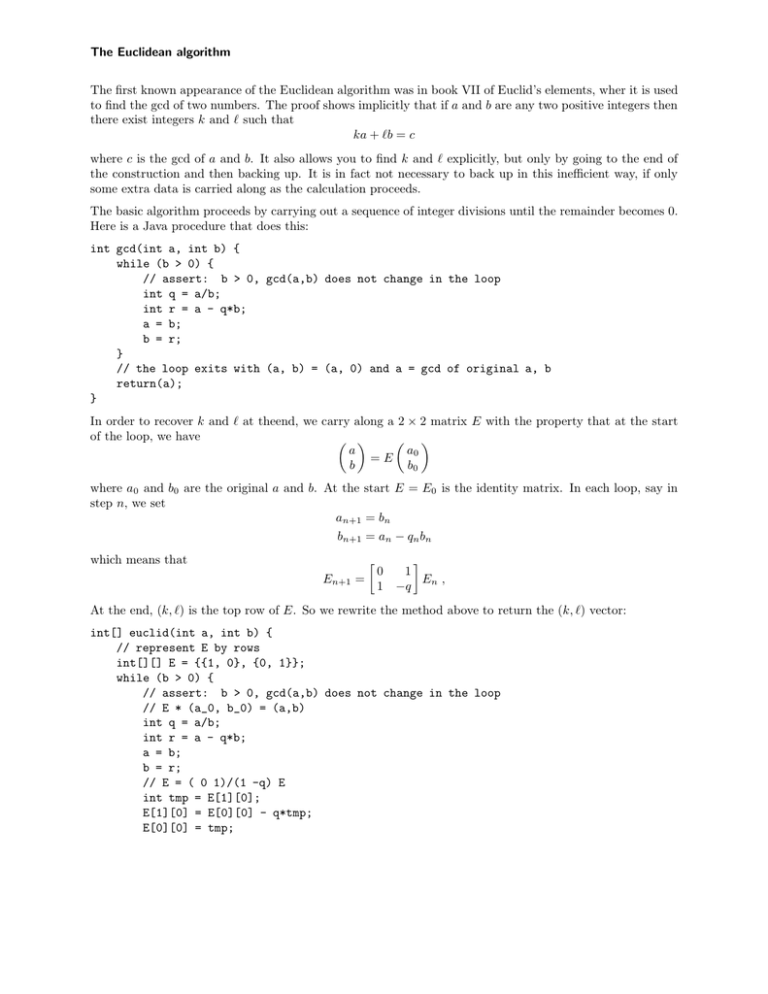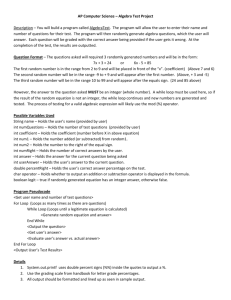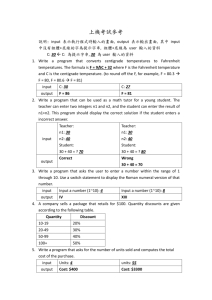The Euclidean algorithm
advertisement

The Euclidean algorithm
The first known appearance of the Euclidean algorithm was in book VII of Euclid’s elements, wher it is used
to find the gcd of two numbers. The proof shows implicitly that if a and b are any two positive integers then
there exist integers k and ` such that
ka + `b = c
where c is the gcd of a and b. It also allows you to find k and ` explicitly, but only by going to the end of
the construction and then backing up. It is in fact not necessary to back up in this inefficient way, if only
some extra data is carried along as the calculation proceeds.
The basic algorithm proceeds by carrying out a sequence of integer divisions until the remainder becomes 0.
Here is a Java procedure that does this:
int gcd(int a, int b) {
while (b > 0) {
// assert: b > 0, gcd(a,b) does not change in the loop
int q = a/b;
int r = a - q*b;
a = b;
b = r;
}
// the loop exits with (a, b) = (a, 0) and a = gcd of original a, b
return(a);
}
In order to recover k and ` at theend, we carry along a 2 × 2 matrix E with the property that at the start
of the loop, we have
a
a0
=E
b0
b
where a0 and b0 are the original a and b. At the start E = E0 is the identity matrix. In each loop, say in
step n, we set
an+1 = bn
bn+1 = an − qn bn
which means that
En+1
0
1
=
En ,
1 −q
At the end, (k, `) is the top row of E. So we rewrite the method above to return the (k, `) vector:
int[] euclid(int a, int b) {
// represent E by rows
int[][] E = {{1, 0}, {0, 1}};
while (b > 0) {
// assert: b > 0, gcd(a,b) does not change in the loop
// E * (a_0, b_0) = (a,b)
int q = a/b;
int r = a - q*b;
a = b;
b = r;
// E = ( 0 1)/(1 -q) E
int tmp = E[1][0];
E[1][0] = E[0][0] - q*tmp;
E[0][0] = tmp;
The Euclidean algorithm
tmp = E[1][1];
E[1][1] = E[0][1] - q*tmp;
E[0][1] = tmp;
}
// the loop exits with (a, b) = (a, 0) and a = gcd of original a, b
int[] e = {E[0][0], E[0][1]};
return(e);
}
2








